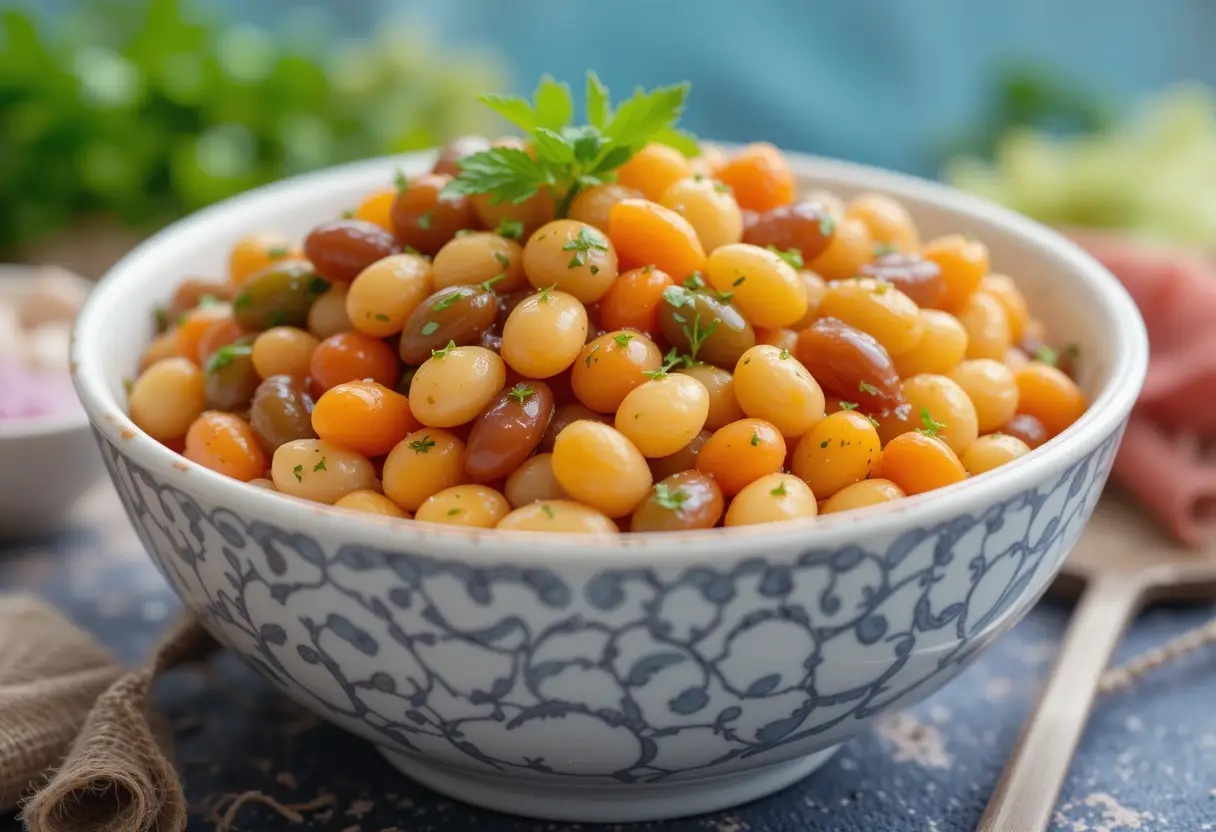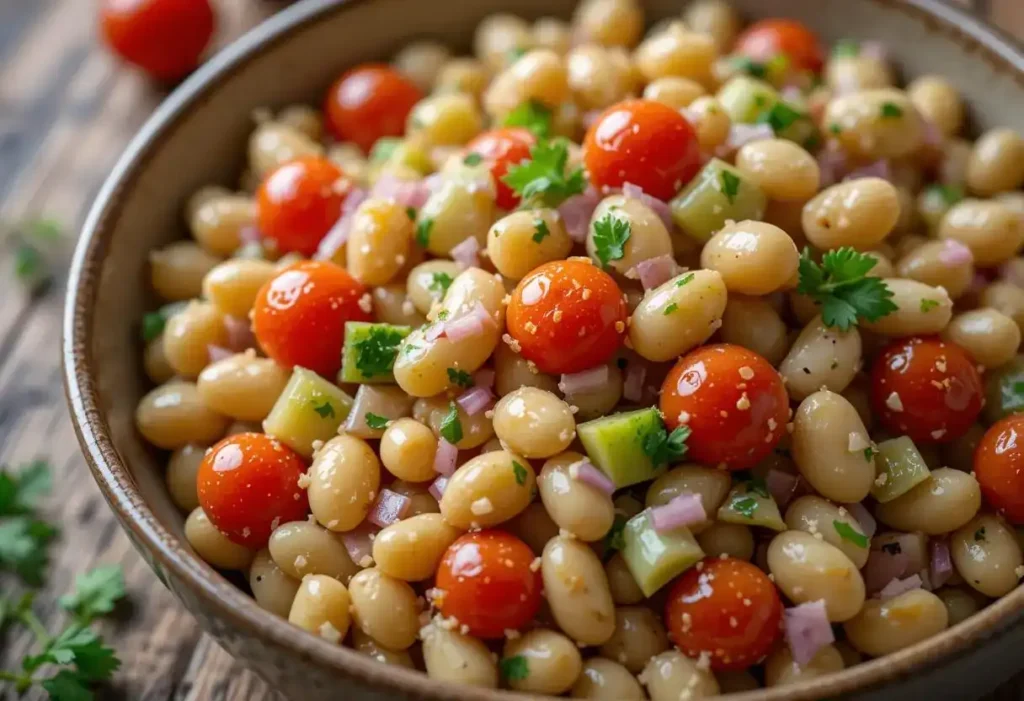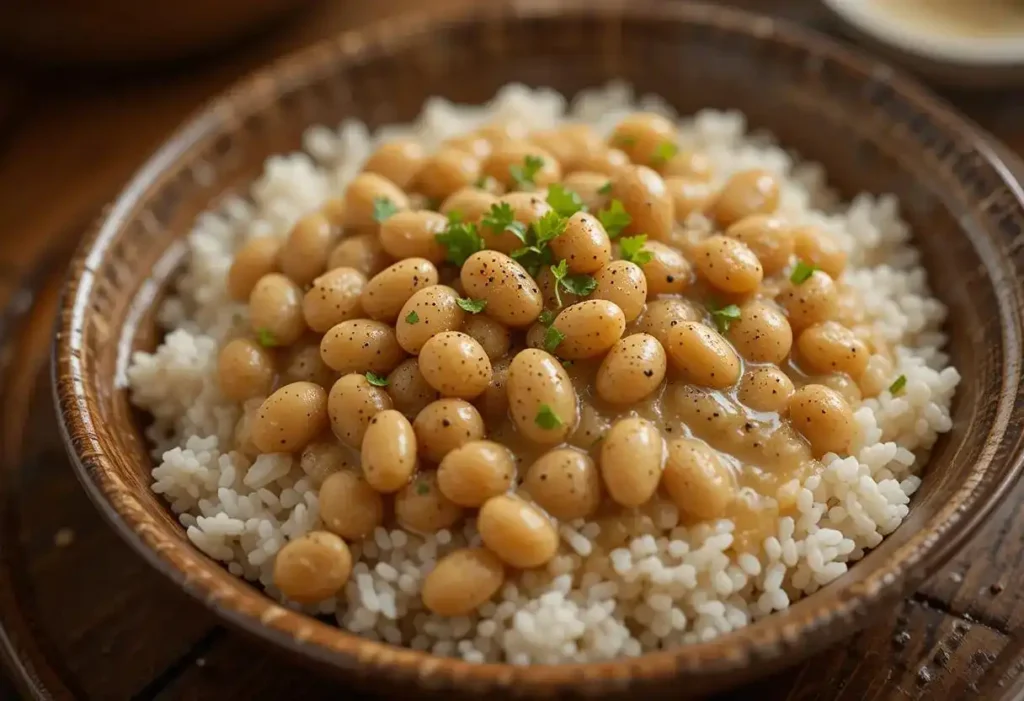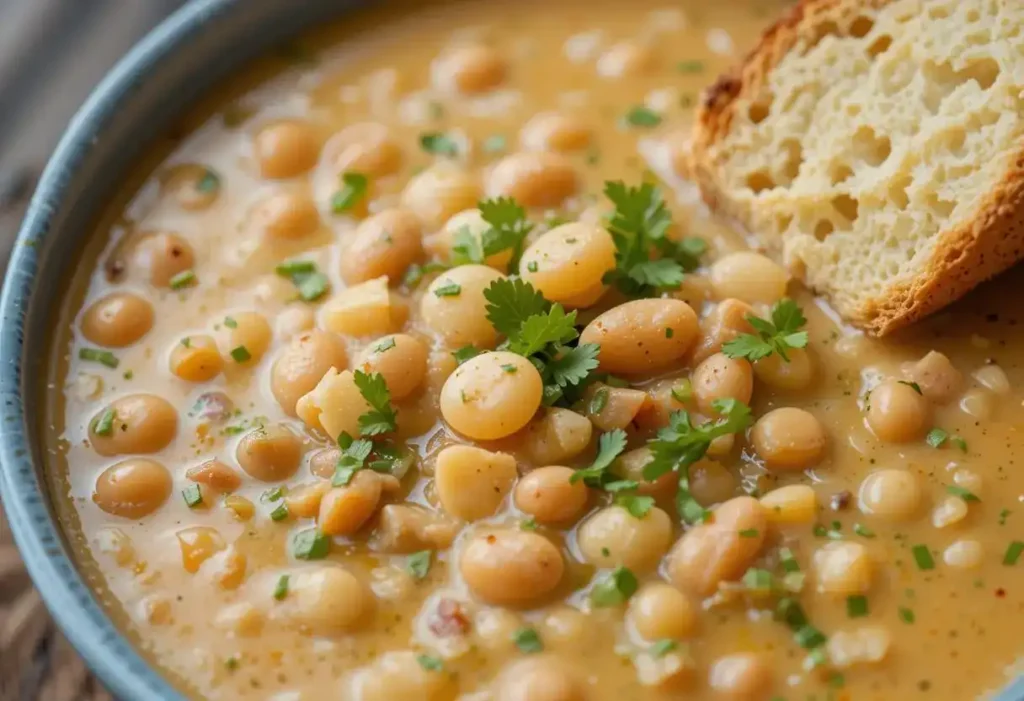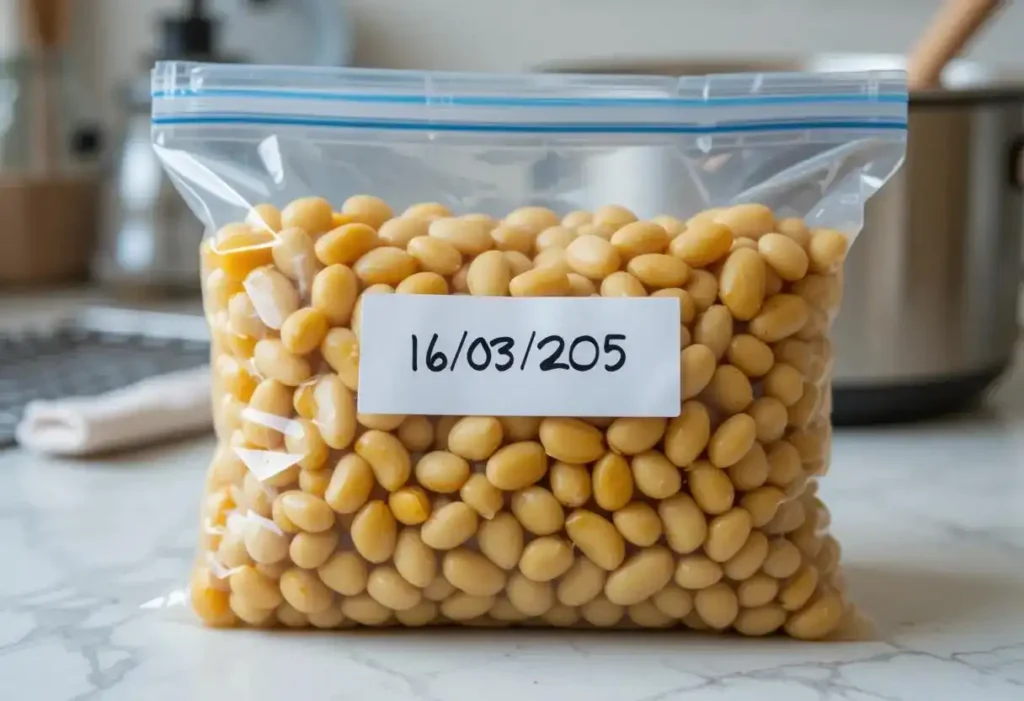Butter beans have a special place in my kitchen. The first time I cooked them, I was just throwing together a quick meal, but their creamy texture and rich flavor completely won me over. Whether you call them lima beans or butter beans, they’re incredibly versatile. From cozy soups to hearty casseroles, they soak up flavor beautifully and turn simple dishes into something truly comforting.
Table of Contents
The Nutritional Benefits of Butter Beans
Butter beans are not only delicious but also packed with nutrients that make them a valuable addition to a balanced diet. Some of their key nutritional benefits include:
- Rich in Protein: Butter beans are an excellent plant-based protein source, making them ideal for vegetarians and vegans.
- High in Fiber: They support digestive health and help maintain a healthy gut.
- Low in Fat: A great choice for those seeking heart-healthy foods.
- Packed with Micronutrients: Butter beans are a good source of vitamins like folate, vitamin B6, and minerals such as iron, potassium, and magnesium.
- Supports Weight Management: Their high fiber and protein content keep you fuller for longer, reducing overall calorie intake.
Why Butter Bean Recipes are a Must-Try
- Versatility: Butter beans can be used in countless recipes, ranging from soups and stews to salads and dips. Their neutral taste complements various cuisines, from Mediterranean to Asian.
- Ease of Preparation: Available dried, canned, or frozen, butter beans are convenient to use. While dried beans require soaking, canned butter beans offer a ready-to-eat option for quick meals.
- Flavor Absorption: Their soft texture and ability to soak up flavors make them ideal for slow-cooked dishes or creamy purees.
- Sustainability: Butter beans are environmentally friendly, as they require less water and resources to grow compared to animal-based protein sources.
- Health Benefits: Including butter beans in your diet can help improve heart health, boost energy, and enhance overall well-being.
In the chapters ahead, we’ll explore a range of butter bean recipes that showcase their versatility and flavor, along with tips for cooking them perfectly every time. Get ready to transform this humble legume into a star ingredient in your kitchen!
Easy Butter Bean Recipes for Beginners
Butter beans are a fantastic ingredient for quick and delicious meals. Here are three beginner-friendly recipes that highlight their versatility and flavor.
Simple Butter Bean Salad
This refreshing salad is perfect as a light meal or side dish.
Ingredients:
- 1 can butter beans (drained and rinsed)
- 1 medium cucumber (diced)
- 1 cup cherry tomatoes (halved)
- 1/4 red onion (thinly sliced)
- 2 tablespoons olive oil
- 1 tablespoon lemon juice
- Salt and pepper to taste
- 1/4 cup fresh parsley (chopped)
Instructions:
- Combine butter beans, cucumber, cherry tomatoes, and red onion in a bowl.
- Drizzle with olive oil and lemon juice.
- Season with salt and pepper, then toss to mix.
- Garnish with parsley and serve chilled.
Butter Beans and Rice: A Classic Dish
A hearty and comforting meal that’s simple to prepare.
Ingredients:
- 1 cup white or brown rice
- 1 can butter beans (drained and rinsed)
- 1 medium onion (chopped)
- 2 garlic cloves (minced)
- 2 cups vegetable broth
- 1 tablespoon olive oil
- 1/2 teaspoon cumin
- 1/2 teaspoon paprika
- Salt and pepper to taste
Instructions:
- Cook rice according to package instructions and set aside.
- Heat olive oil in a pan and sauté onion and garlic until soft.
- Add butter beans, cumin, paprika, and a pinch of salt and pepper. Stir well.
- Pour in the vegetable broth and simmer for 5 minutes.
- Serve the beans over rice and enjoy!
Creamy Butter Bean Soup
This comforting soup is rich, velvety, and perfect for a cozy evening.
Ingredients:
- 2 cans butter beans (drained and rinsed)
- 1 medium onion (chopped)
- 2 garlic cloves (minced)
- 2 cups vegetable broth
- 1/2 cup coconut milk or heavy cream
- 1 tablespoon olive oil
- 1/2 teaspoon thyme
- Salt and pepper to taste
Instructions:
- Heat olive oil in a pot and sauté onion and garlic until fragrant.
- Add butter beans, thyme, salt, and pepper. Stir well.
- Pour in the vegetable broth and bring to a boil. Reduce heat and simmer for 10 minutes.
- Use an immersion blender to puree the soup until smooth.
- Stir in the coconut milk or cream and heat gently.
- Serve hot with crusty bread.
These easy butter bean recipes are great for beginners and are sure to impress with their simplicity and taste. Enjoy exploring the possibilities of this versatile ingredient!
More Recipes You’ll Love
- Butter Bean Lasagna : A creative twist on a classic comfort food using nutrient-packed butter beans.
- Vegetarian Lasagna Soup : Hearty, warming, and perfect for pairing with a butter bean side.
- Sweet Hawaiian Crockpot Chicken : Serve with butter beans for a tropical and savory combo.
- Scalloped Potatoes with Cheese Powder : A creamy and cheesy side dish to complement your beans.
- Grilled Chicken Wrap Recipe : Add a butter bean spread or side for extra protein and texture.
Cooking Tips and Techniques for Perfect Butter Beans
Mastering the art of cooking butter beans ensures they turn out tender, flavorful, and versatile every time. Follow these tips and techniques for the best results.
Best Practices for Soaking and Cooking
- Soaking Dried Butter Beans:
- Overnight Soak: Place beans in a large bowl and cover with 3–4 inches of water. Let them soak for 8–12 hours.
- Quick Soak: Bring beans and water to a boil for 2 minutes, then remove from heat and let sit for 1 hour before cooking.
- Cooking:
- Drain soaked beans and rinse well.
- Add beans to a pot with fresh water (about 3 cups of water per cup of beans).
- Bring to a gentle boil, then reduce to a simmer. Cook uncovered for 45–60 minutes or until tender.
- Add salt toward the end of cooking to avoid toughening the beans.
- Flavor Enhancements:
- Include aromatics like garlic, onion, bay leaves, or herbs in the cooking water for added flavor.
Common Mistakes to Avoid
- Skipping the Soak:
- Dried butter beans require soaking to soften and reduce cooking time. Skipping this step can result in unevenly cooked beans.
- Adding Salt Too Early:
- Adding salt during the early stages of cooking can toughen the beans. Wait until the beans are almost tender.
- Cooking at a Rapid Boil:
- Boiling beans vigorously can cause them to split or become mushy. Always simmer gently.
- Using Old Beans:
- Old beans take longer to cook and may never soften fully. Purchase fresh, high-quality dried beans for the best results.
How to Achieve Perfect Texture Every Time
- Check Frequently:
- Test beans periodically during cooking to achieve your preferred texture. They should be tender but not mushy.
- Control Heat:
- Maintain a consistent simmer to cook beans evenly without splitting them.
- Cool Properly:
- If not using immediately, cool cooked beans in their cooking liquid to prevent drying out.
Preserving and Storing
Proper preservation methods can extend the shelf life of butter beans, whether cooked or dried, ensuring they remain a pantry staple.
Freezing Cooked Butter Beans
- Preparation:
- Cool cooked beans completely.
- Portion beans into airtight containers or freezer bags, leaving some room for expansion.
- Add a small amount of cooking liquid to prevent freezer burn.
- Storage:
- Label containers with the date and freeze for up to 3 months.
- Usage:
- Thaw in the refrigerator overnight or add frozen beans directly to soups and stews.
Canning Butter Bean
- Pressure Canning:
- Prepare beans by soaking and partially cooking them.
- Pack beans into sterilized jars, leaving 1-inch headspace. Cover with boiling water or broth.
- Process in a pressure canner according to the manufacturer’s instructions (typically 10–12 PSI for 75–90 minutes, depending on jar size).
- Storage:
- Store in a cool, dark place for up to 1 year.
Tips for Long-Term Storage
- For Dried Beans:
- Store in an airtight container in a cool, dry place. Avoid exposure to moisture and heat.
- Use oxygen absorbers for extended storage (up to 2–3 years).
- For Canned Beans:
- Inspect jars for leaks or damage before use.
- Rotate stock to ensure older jars are used first.
- Labeling:
- Always label containers with the date to track freshness.
By following these tips, you can enjoy perfectly cooked butter beans and ensure they are always ready for your next culinary adventure!
FAQ About Butter Bean Recipes
Butter beans are a versatile and nutritious ingredient, but they often raise questions for new and seasoned cooks alike. Here are answers to some commonly asked questions about butter beans.
Can Butter Beans Be Eaten Raw?
No, butter beans should not be eaten raw. Raw butter beans contain linamarin, a compound that can release cyanide when consumed. Cooking thoroughly neutralizes this compound, making the beans safe to eat.
What Are Some Good Substitutes for Butter Beans in Recipes?
If butter beans are unavailable, several substitutes can work depending on the dish:
Cannellini Beans: Mild and creamy, they’re an excellent substitute in soups and stews.
Navy Beans: Small and tender, suitable for casseroles and baked dishes.
Chickpeas: Add a nutty flavor and firmer texture to salads and curries.
Great Northern Beans: Similar in taste and texture, they are a great all-around substitute.
Are Butter Beans Suitable for a Gluten-Free Diet?
Yes, butter beans are naturally gluten-free. They are an excellent ingredient for those with gluten sensitivities or celiac disease, offering a nutritious, protein-rich alternative in recipes.
How Do You Make Butter Beans Taste Better?
Enhancing the flavor of butter beans is easy with the right ingredients and techniques:
Seasonings: Use salt, pepper, and spices like paprika, cumin, or chili powder to add depth.
Herbs: Fresh herbs like parsley, thyme, or cilantro brighten the dish.
Aromatics: Sauté garlic, onion, or leeks as a flavor base.
Acidity: Add a splash of lemon juice or vinegar for a tangy finish.
Broth: Cook butter beans in vegetable or chicken broth for added richness.
What Are the Differences Between Butter Beans and Lima Beans?
Butter beans and lima beans are often considered the same but differ in terminology and maturity:
Terminology: The term “butter beans” is commonly used in the UK, while “lima beans” is preferred in the US.
Maturity: Young, green lima beans are tender and slightly sweet, while mature butter beans are creamier and more starchy.
Culinary Uses: Green lima beans are ideal for salads and light dishes, whereas butter beans are better for stews, soups, and purees.
Can Butter Beans Be Used in Dessert Recipes?
Yes, butter beans can be used in dessert recipes! Their mild flavor and creamy texture make them a great base for sweet dishes. Examples include:
Bean Brownies: Blend butter beans into brownie batter for a moist, protein-packed dessert.
Butter Bean Pudding: Combine with sweeteners, coconut milk, and vanilla for a creamy treat.
Bean Cookies: Use pureed butter beans to add moisture and nutrients to cookie dough.
Whether you’re exploring savory or sweet recipes, butter beans offer endless possibilities and versatility in the kitchen!
Try it !
Why not give this butter bean recipe a try this week? It’s easy to make, packed with nutrients, and perfect for everything from quick lunches to satisfying dinners. Once you taste how delicious and versatile they are, butter beans might just become a regular favorite in your kitchen.

